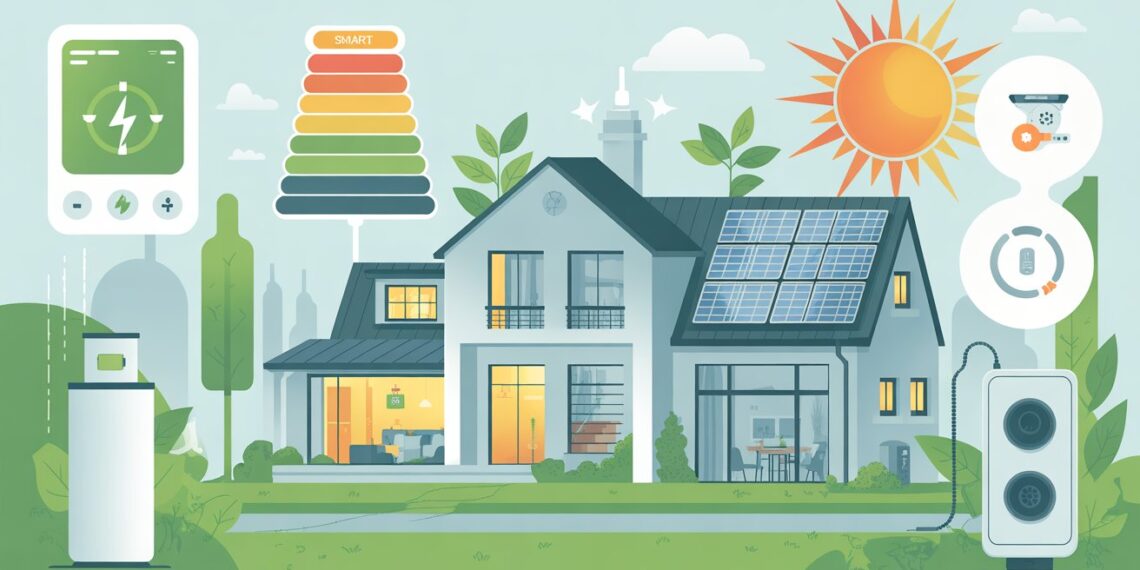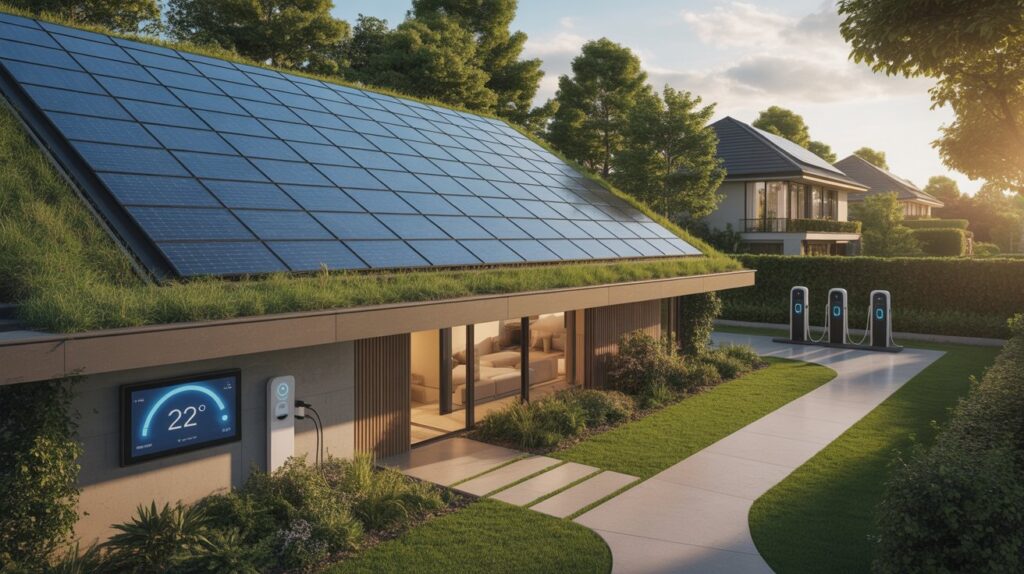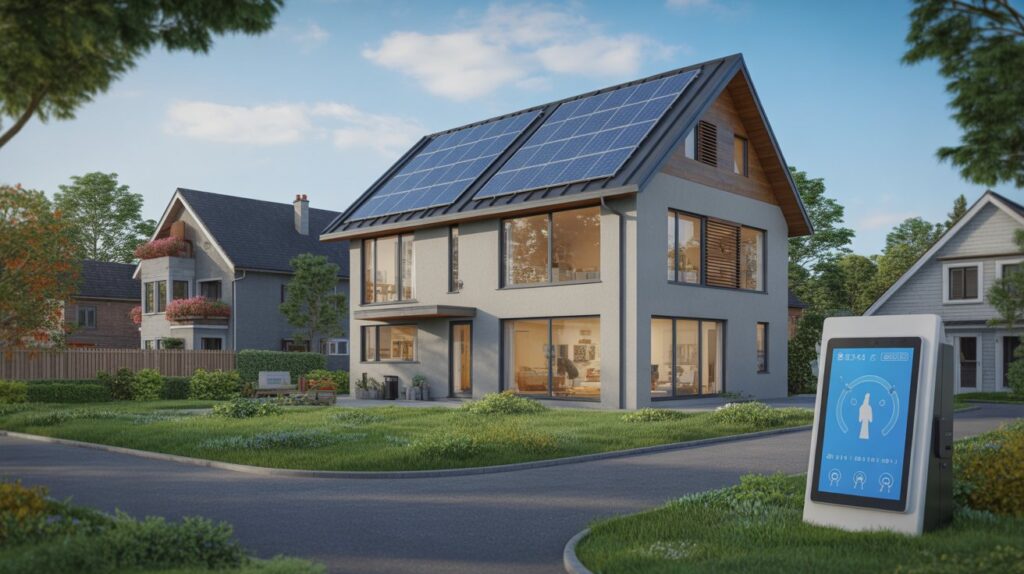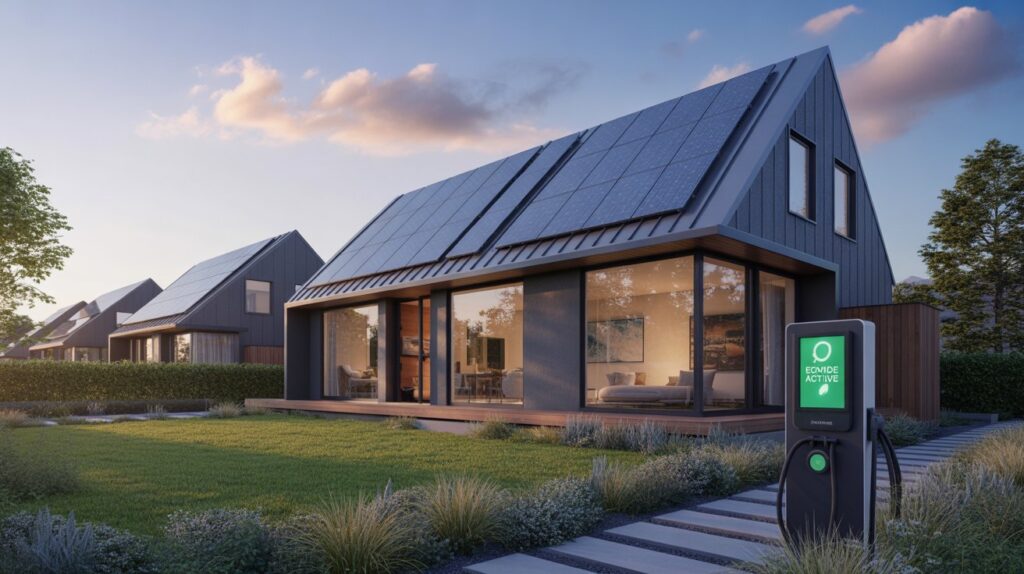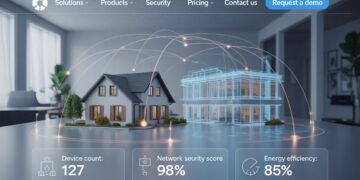Rising energy costs, increasing global demand, and the urgency of addressing climate change have shifted the focus toward smarter, more efficient ways of managing household energy. The concept of Smart Homes and Energy Conservation has emerged as a practical solution that combines convenience, technology, and sustainability. From smart thermostats that learn your habits to lighting systems that automatically adapt to your presence, smart homes offer measurable energy savings while improving quality of life.
This comprehensive guide provides a deep dive into how smart homes work, the technologies driving energy savings, implementation strategies, benefits, limitations, and practical steps you can take to optimize your home for efficiency. Along the way, we will explore real-world examples, industry insights, and expert tips that help position your home for long-term savings and sustainability.
What is a Smart Home?
A smart home is a residence equipped with connected devices and systems designed to automate and optimize various functions, such as heating, cooling, lighting, and appliance usage. These systems communicate with each other via Wi-Fi, Zigbee, Z-Wave, or emerging standards like Matter. A central hub or app allows homeowners to control settings remotely, monitor consumption, and receive real-time feedback.
Key Characteristics of a Smart Home
- Automation: Devices act without human intervention based on pre-programmed conditions, AI algorithms, or learning patterns.
- Connectivity: Systems communicate with each other and can be monitored from smartphones, tablets, or voice assistants.
- Energy Efficiency: Designed to reduce waste by optimizing energy use in real time.
- Customization: Adaptable to individual lifestyles, preferences, and local energy tariffs.
- Scalability: Start with one device and expand to an entire ecosystem over time.
Core Smart Technologies for Energy Conservation
1. Smart Thermostats
Smart thermostats are among the most impactful energy-saving devices. They adjust heating and cooling based on occupancy patterns, weather forecasts, and user preferences. By learning household behaviors, they minimize energy waste when spaces are unoccupied. Studies show they can cut energy bills by up to 10–20%, and in regions with extreme climates, savings can be even higher.
2. Smart Lighting Systems
Smart lighting combines LED technology with automation. Motion sensors detect activity and turn lights on or off accordingly. Daylight sensors adjust brightness to make the most of natural light. Remote access ensures lights aren’t left on unnecessarily, and dimming functions reduce consumption without sacrificing comfort. Smart lighting can lower lighting-related energy use by up to 75% compared to traditional bulbs.
3. Smart Plugs and Power Strips
These small yet powerful devices allow users to monitor and control the power supply of individual appliances. They can be scheduled, controlled remotely, or set to shut off during certain hours. Their primary advantage is reducing standby power, which can account for 5–10% of a household’s total energy consumption.
4. Smart Appliances
Smart refrigerators, washing machines, and ovens integrate with energy-saving modes and communicate with the grid to optimize load distribution. For example, a dishwasher can be set to run only during off-peak hours. Over time, these appliances not only reduce energy use but also extend lifespan by avoiding unnecessary strain.
5. Smart Meters and Dashboards
Smart meters provide households with detailed, real-time insights into energy usage. Instead of waiting for monthly bills, users can see how much energy they are consuming each day or even each hour. This feedback helps households change habits, identify inefficient appliances, and adjust behaviors proactively.
6. Home Energy Management Systems (HEMS)
HEMS integrate all devices into a single platform, offering holistic control. By coordinating smart thermostats, lighting, appliances, and renewable energy inputs, these systems create a dynamic energy ecosystem. Advanced systems even predict usage patterns and optimize accordingly.
7. Renewable Energy Integration
Smart homes can integrate with solar panels, battery storage, and electric vehicle chargers. By storing energy during peak production times and using it during high-demand periods, households reduce reliance on the grid. This not only saves money but also stabilizes energy supply during peak hours.
How Smart Homes Contribute to Energy Conservation
Reduction of Standby Power
Idle electronics often consume power even when turned off. Smart plugs and automated strips eliminate this waste by cutting off electricity completely.
Load Shifting
Devices such as washing machines and dishwashers can be scheduled during off-peak hours when energy is cheaper and the grid is under less strain. This reduces both household bills and system-wide emissions.
Adaptive Control
AI-driven thermostats and appliances adjust in real time. For example, if sensors detect that no one is home, HVAC systems will automatically reduce heating or cooling.
Behavioral Insights
Smart dashboards and apps provide visualizations and alerts that encourage homeowners to make informed, energy-conscious decisions.
Quantifying the Savings
- Heating and Cooling: Smart thermostats save between 8–15% annually, and in colder climates, this figure can be higher.
- Lighting: Smart LED systems consume up to 80% less energy compared to traditional bulbs.
- Appliances: Combining efficiency standards with smart controls can yield 10–20% reductions.
- Overall Impact: A fully optimized smart home can achieve 15–30% overall energy savings, translating into hundreds of dollars annually for the average household.
Barriers and Limitations
Upfront Costs
The biggest challenge is cost. While smart plugs and bulbs are affordable, comprehensive systems like HEMS or solar-battery integration require significant investment.
Interoperability
Different manufacturers may use competing platforms, making integration difficult. The rise of Matter, a universal standard, promises to solve this challenge in the near future.
Privacy and Security
Smart homes are only as secure as their weakest device. Data breaches or hacking incidents highlight the importance of software updates and strong passwords.
Dependence on Connectivity
Unstable internet connections can limit functionality, especially for cloud-based systems.
Step-by-Step Implementation Roadmap
- Start Small: Experiment with smart plugs and LED bulbs to see immediate benefits.
- Add Control: Install a smart thermostat for major heating and cooling savings.
- Expand Monitoring: Use smart meters or energy dashboards to track consumption.
- Scale Up: Introduce smart appliances and integrate renewable sources such as solar.
- Centralize Management: Adopt a HEMS to coordinate all devices for maximum efficiency.
Regional and Local Context
Energy conservation varies depending on where you live:
- High-Cost Electricity Regions: Households experience faster ROI from smart systems.
- Areas with Time-of-Use Tariffs: Load shifting through smart appliances can generate substantial savings.
- Government Incentives: Rebates for installing smart meters, solar systems, or efficient appliances accelerate adoption.
- Developing Countries: Smart homes can reduce strain on overburdened grids while lowering household expenses.
Case Studies and Real-World Examples
- Case Study 1: U.S. Suburban Household: Installing a smart thermostat and lighting system reduced annual energy costs by 18%.
- Case Study 2: European City Apartment: Integration of smart plugs and meters saved 12% without major appliance upgrades.
- Case Study 3: Rural Home with Solar + Battery: Combining renewable energy with smart management achieved nearly 40% reduction in grid dependency.
Future Trends in Smart Homes and Energy Conservation
- Artificial Intelligence: AI will deliver predictive analytics that anticipate needs before they arise.
- Vehicle-to-Home (V2H): Electric vehicles will act as backup energy storage units, supplying power during outages.
- Grid Integration: Homes will play active roles in stabilizing national grids through demand response.
- Enhanced Interoperability: The Matter standard will encourage seamless integration across brands.
- Edge Computing: Future devices may operate independently of the cloud, improving speed and privacy.
Frequently Asked Questions (FAQ)
Do smart homes really save energy?
Yes. Research shows households adopting smart technologies can cut total energy use by 15–30% depending on device adoption and behavioral changes.
Which smart device provides the biggest energy savings?
Smart thermostats generally deliver the highest savings due to heating and cooling being the largest portion of household energy consumption.
Are smart homes secure?
With proper precautions such as regular software updates, two-factor authentication, and choosing reputable brands, smart homes can be secure.
Can smart homes work in older houses?
Yes. Most smart devices are designed for easy retrofitting without major electrical modifications.
What is the average payback period for smart home investments?
Depending on local electricity rates, smart devices typically pay for themselves within 2–5 years, with larger systems like solar-battery setups requiring longer but yielding greater long-term savings.
Conclusion
The integration of smart technologies into modern households is not just about convenience—it is a strategic move toward sustainability, resilience, and cost savings. By adopting systems such as smart thermostats, lighting, plugs, and appliances, homeowners can significantly reduce energy bills and carbon emissions. Moreover, the shift toward Smart Homes and Energy Conservation represents a broader cultural movement toward efficiency and responsibility.
The path to building a smart home does not have to be overwhelming. By starting small and gradually scaling up, every household can participate in energy conservation without sacrificing comfort or convenience. As technologies evolve and become more affordable, smart homes will move from being an option to a necessity in the global transition toward sustainable living.

